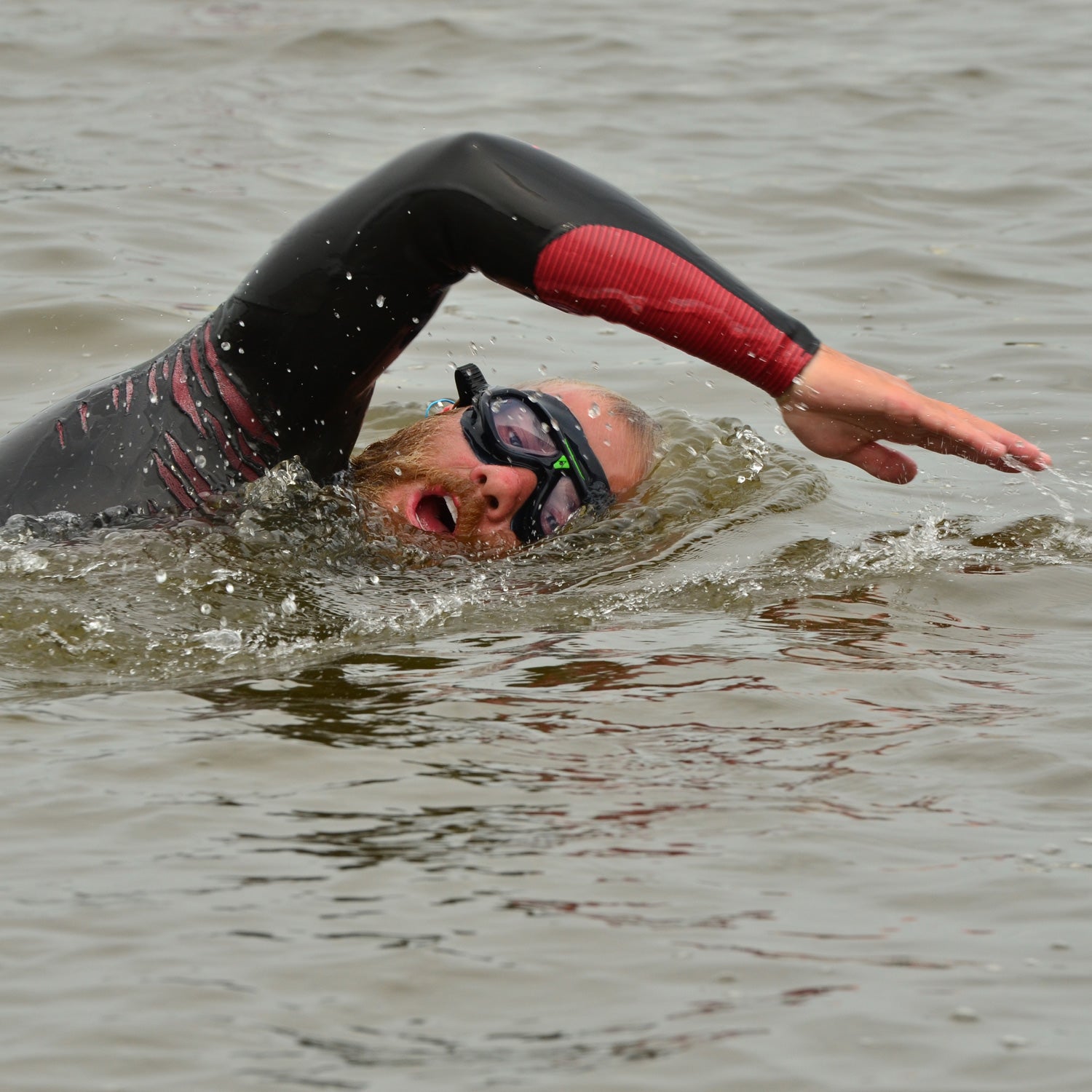On December 4, six months after kicking off from Lake Itasca in northern Minnesota, Chris Ring arrived in the Gulf of Mexico. It was a Twain-esque voyage down the heart of America, only Ring didn’t have a paddle or a boat. He swam.
This makes the 28-year-old Navy combat veteran the first American to swim the entire 2,350 miles of the Mississippi River. Only Martin Strel, a Slovenian long-distance swimmer, has completely conquered The Big Muddy. Ring’s effort is on behalf of , a nonprofit that honors fallen military members. Throughout his swim, which passed through 10 states, he met with individuals who had lost family members in the Iraq war.
Though Ring swam for two years at Father Ryan High School in Nashville, he didn’t have much experience with distance—his longest swim before the challenge was seven miles. For most of his trip, Ring averaged 14-20 miles a day. Not to mention, he got a front-row seat to the most intimidating challenges that the Mississippi can throw at a person. “The Mississippi isn’t like swimming in a pool,” he says. “There are undercurrents, whirlpools, large swells, a lot of things you can’t predict.” These three obstacles gave him the most trouble:
1. The Chain of Rocks in Granite City, Illinois
Just north of St. Louis, the Mississippi winds through a section of rapids and drop-offs known as the Chain of Rocks. It’s a popular section marked by its eponymous bridge that for a time was used by U.S. Route 66.
Leading up to the Chain of Rocks, locals gave Ring plenty of advice to chew on, but a thunderstorm and unpredictable water levels threw a wrench in those plans. “When there’s a storm there’s high swells of water constantly blowing in your face,” Ring says. “You swallow a lot of water.”
He also had to scale the Chain of Rocks Lock, one of 29 locks or dams on the Upper Mississippi. For Ring, this meant climbing up the guide wall and then taking a ladder down on the other side.
2. The Ships in St. Louis, Missouri
Swimming through St. Louis, Ring dodged between passing cargo ships and other watercrafts. His crewmembers would alert the Coast Guard and other large freighters by radio, but not all boats were tuned to the same frequencies.
Ring’s closest call happened when a pleasure craft nearly sideswiped him. “They’re not paying as much attention,” he says.
During his first few weeks in Minnesota, Ring was surprised by the river’s low depth. He recalls crawling under logs on his hands and knees to respect the integrity of the swim. Meanwhile, St. Louis presented a challenging mix of shallow and deep, choppy water. “It had the roughest currents by far,” Ring says.Â
3. The Sewage in St. Francisville, Louisiana
The motto in this Louisiana town is “soothing to the soul,” but for Ring, it was anything but soothing. Sloshing through sewage and frothy bubbles on the surface, he says it was hard not to get sick from breathing in the air.
“Coming up for a breath it just reeked,” Ring says. “Even the guys in the kayaks were talking about how bad it smelled.”
With more than 30 million pounds of toxic chemicals dumped into it in 2012, according to Environment America, the Mississippi River is the country’s third-most polluted watershed.
“Occasionally, I’d swallow it,” Ring says of the sewage. “I’d throw up here or there.”Â
By the end, Ring had gone through six wetsuits, lost 30 pounds and met hundreds of families of fallen service members. Although his shoulders and hips are battered, he says the physical beating was worth it for the people he met along his journey.
“A lot of people try to avoid conversations with people who’ve lost someone,” Ring says. “I just want to keep their memory alive.”


